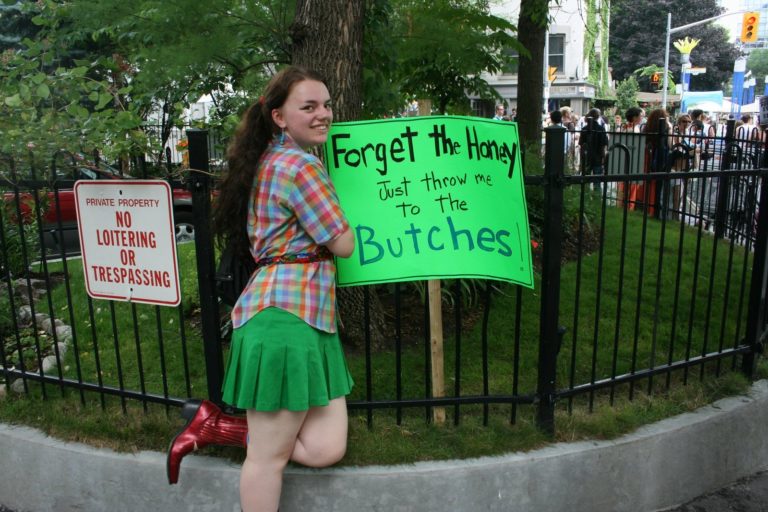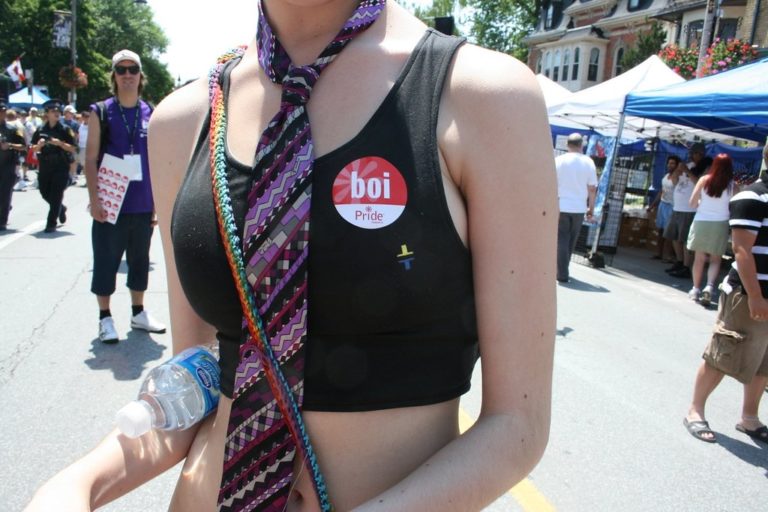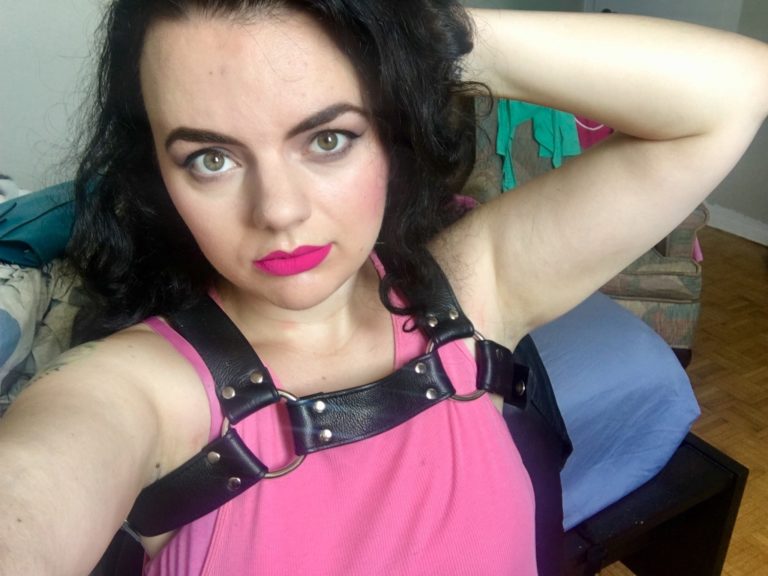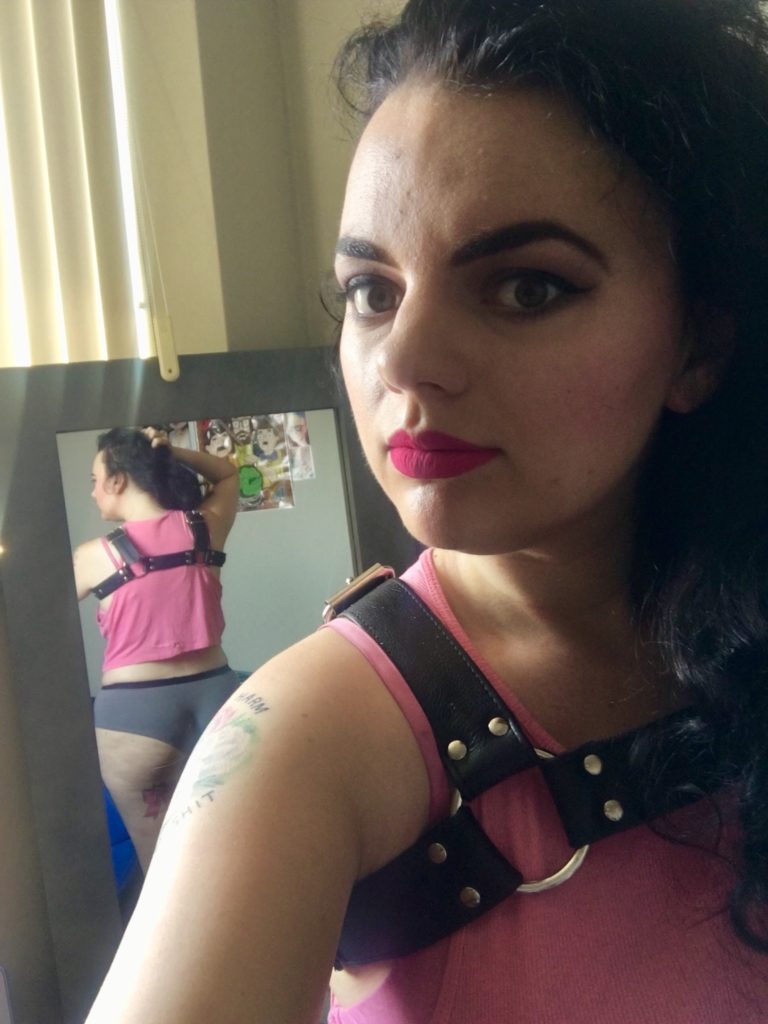
How did vibrators develop a reputation as being “for women,” when in fact they can feel good for anyone, regardless of gender or genitals?
I think there are several answers to this question, but one of them is the fact that vulvovaginal orgasms are usually seen as more “complex” and “elusive” than penile orgasms. However, this is a misconception; people with vaginas reach orgasms less frequently and less reliably than people with penises because our culture frames penetrative intercourse as the main/best/only “real” sex act, and it’s a sex act that happens to stimulate the penis directly, while largely ignoring vulva-owners’ main sexual pleasure organ, the clitoris. (This is why, for instance, Kinsey found that women take an average of four minutes to reach orgasm during masturbation, and lesbian women orgasm more often than straight women.)
By their very nature, vibrators provide more intense sensations than any part of the human body can. So it makes sense that a lot of people with vulvas, now and in the past, turn to vibrators to get themselves off. The sex act we’re supposed to find most satisfying usually isn’t, and our partners may be unaware or indifferent to that fact – not to mention, many of us receive inadequate sex education which leaves out crucial information about sexual pleasure – so of course we often use mechanical tools to help us close the gap between our real sex lives and what we wish they were. There are many other reasons people use vibrators, of course, but I think this has been a big one historically, and it partly explains why vibrators are seen as being for vulvas primarily.
That being said, vibrators can feel good for anyone. They function by stimulating sensitive nerves, which we’ve all got plenty of. Vibrators have been shown to help with sexual dysfunctions like erectile dysfunction and anorgasmia, too. To think of vibrators as being “only for women” (by which people usually mean “only for cis women,” sigh) is not only limiting, but also plainly false.
There are lots of benefits to using vibrators on penises, besides just “they feel good” (duh). This masturbation method can be physically easier to achieve than a traditional stroking motion, so it’s a good option for people with disabilities or chronic pain, or just people who feel like jerking off in a slightly lazier way sometimes (#relatable). Vibrators can also be enjoyable for many transfeminine folks, including those who experience genital dysphoria – several of the transfems I know are especially enamored with the Magic Wand and/or the Hot Octopuss Pulse. Vibrations also feel really different from any other type of stimulation, so if you’re ever bored of your masturbation routine or just feel like trying something new, they’re a great addition to your nightstand drawer.
As the partner of someone with a penis, I also really enjoy using vibes on them. It can be easier on my chronically sore hands than giving a handjob (or a blowjob, for that matter), and it allows me to snuggle up close to my partner and watch their reactions. I can utilize my many years of experience using vibrators on myself to inform my technique when using them on a partner, and the results are often explosive.

On that note, one of the things I like best about using vibrators on penises is that it really demonstrates how similar our genitals are to each other. Clits and dicks are formed from the same tissues in utero, and respond similarly to stimulation. While there are some toys which are specifically shaped to suit one or the other, many vibes can easily be used on all kinds of genitals, with wand vibrators being a prime example. I think this is heart-warming, in that it shows us we’re all more alike than we realize – but it’s also practical from an economic standpoint, in that you don’t have to buy multiple vibrators if you and your partner are able to share the same one (possibly even at the same time!).
When I took a 2-week break from vibrators recently, the main thing I noticed was that my orgasms without vibrators are much weaker than those with vibrators. Contrary to sex-negative discourse which claims that vibrators cheapen sex or make it less “real,” incorporating vibrators into my sex life has only ever improved its quality, and the intimacy I feel with my partner(s), because those earth-shattering vibrator orgasms make sex more fun for both of us. I wish that everyone who wants that magnitude of pleasure could experience it – and I think one way to help create that world is to further normalize the idea that anyone can use a vibrator. Yes, even you.
This post was sponsored by the folks at The Haus of Shag, who carry some of my all-time favorite vibrator brands, like Fun Factory, Magic Wand, and Dame. Feel free to check ’em out! As always, all writing and opinions are my own.


 When mb first told me they were questioning their gender, we were sitting in an ornate, empty bar in Montreal, cocktails in hand. “I’ve been having some… gender feelings lately,” they said, “like really enjoying it when you call me feminine words.” This hadn’t been purposeful on my part – I calls ’em like I see ’em, and what I always saw when I looked at my partner was a person who at once embodied handsomeness and prettiness, beauty that transcended gender lines. We’d played before with dressing them up in my clothes, adorning them with lipstick and eyeliner, for scenes that then portended only power exchange and not a shift in identity. This revelation wasn’t a surprise; it hit me in the gut with a thump of Oh. Okay. Of course.
When mb first told me they were questioning their gender, we were sitting in an ornate, empty bar in Montreal, cocktails in hand. “I’ve been having some… gender feelings lately,” they said, “like really enjoying it when you call me feminine words.” This hadn’t been purposeful on my part – I calls ’em like I see ’em, and what I always saw when I looked at my partner was a person who at once embodied handsomeness and prettiness, beauty that transcended gender lines. We’d played before with dressing them up in my clothes, adorning them with lipstick and eyeliner, for scenes that then portended only power exchange and not a shift in identity. This revelation wasn’t a surprise; it hit me in the gut with a thump of Oh. Okay. Of course.

 It’s clear that this type of harness is not designed for people with boobs. It presses down on the tops of mine in a vaguely restrictive manner, and doesn’t even push them together for bonus cleavage. It yearns to stretch across flat expanses, but instead, I make it traverse my cushy curves. The effect is distinctly gender-weird when I clasp it over my girly dresses or thin crop tops.
It’s clear that this type of harness is not designed for people with boobs. It presses down on the tops of mine in a vaguely restrictive manner, and doesn’t even push them together for bonus cleavage. It yearns to stretch across flat expanses, but instead, I make it traverse my cushy curves. The effect is distinctly gender-weird when I clasp it over my girly dresses or thin crop tops. Whether I’m wearing this harness in or out of the bedroom, I feel like I’m flagging as the sex-weirdo I am – someone willing to try edgy acts, subvert norms, fight for the freedom to fuck howsoever I please. Visible markers of sexual identity, like this chest harness or the
Whether I’m wearing this harness in or out of the bedroom, I feel like I’m flagging as the sex-weirdo I am – someone willing to try edgy acts, subvert norms, fight for the freedom to fuck howsoever I please. Visible markers of sexual identity, like this chest harness or the 